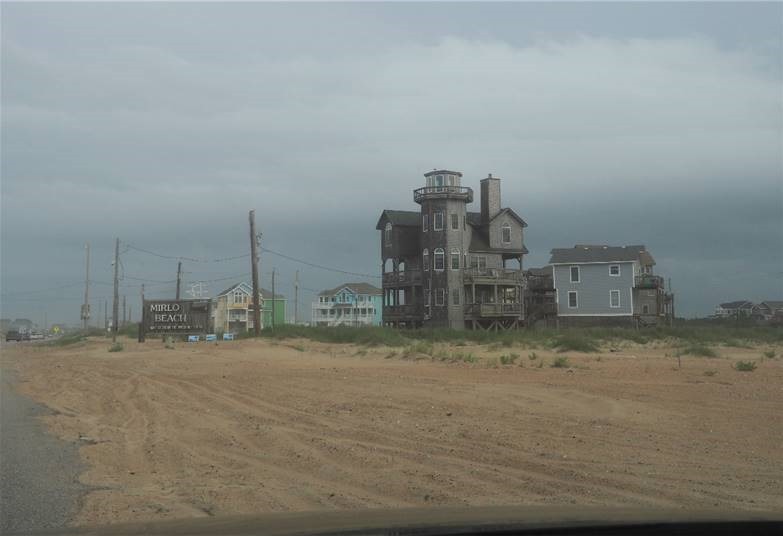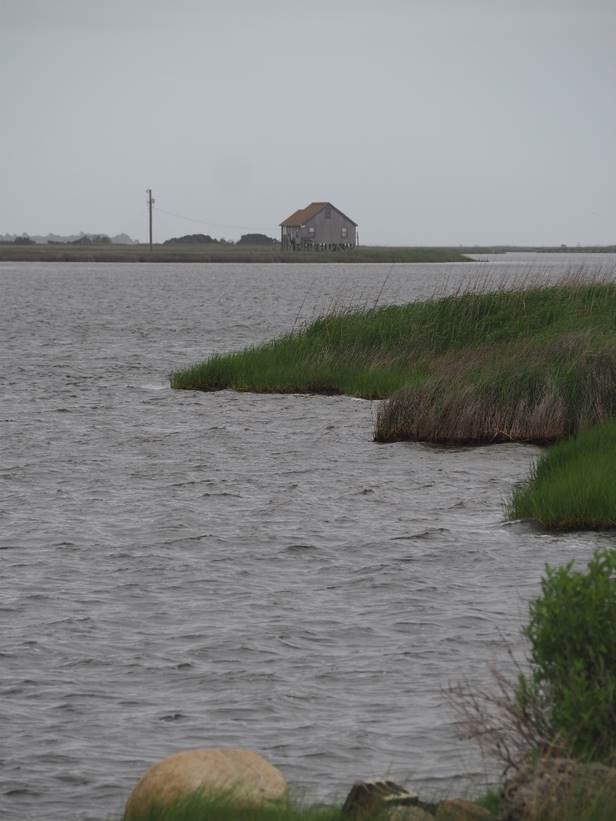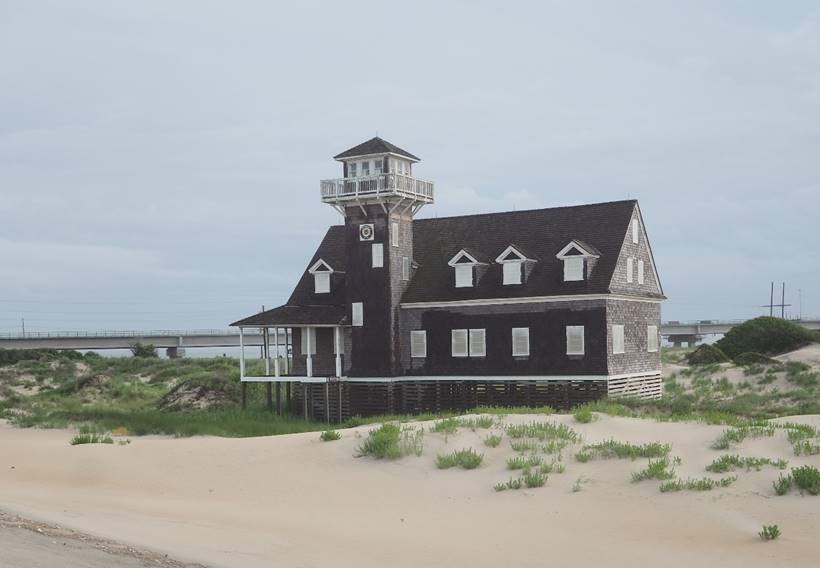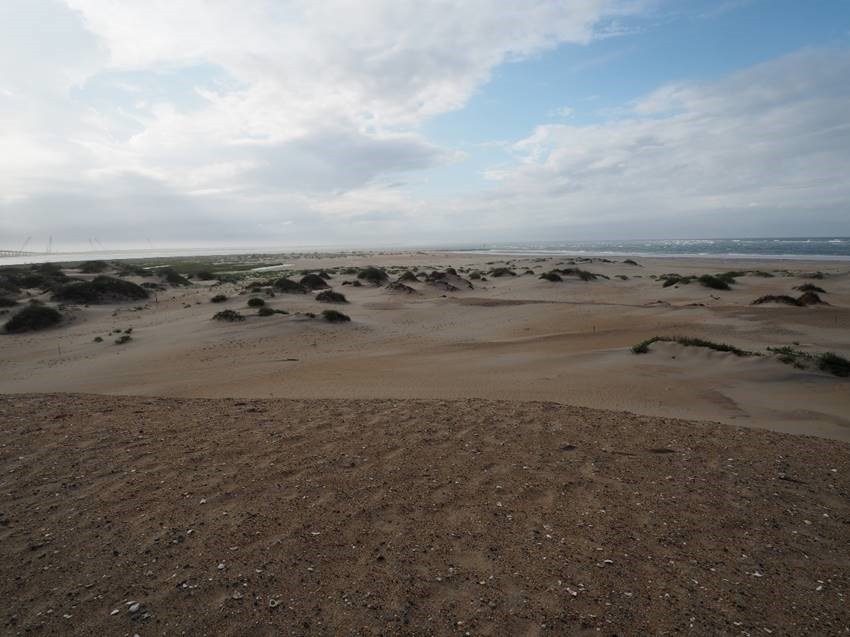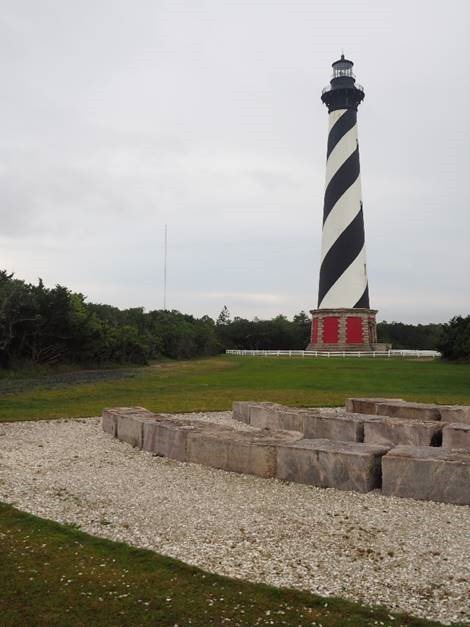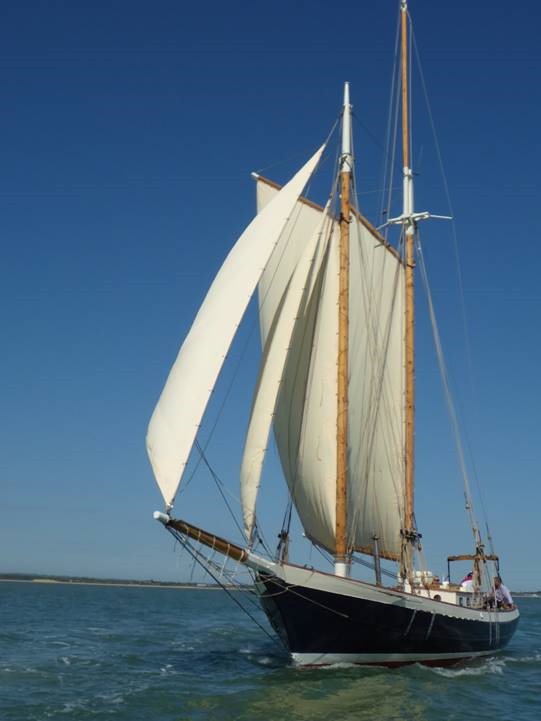13 June - Cape Hatteras, the Outer Banks and some serious 'dit spinning'

|
36:55.4N 076:11.4W The road trip to Charleston was straightforward, if long. The Carolinas are fairly flat, with plenty of forest and some good looking farmland. It’s always interesting to see how other people live and I was surprised to see houses apparently dropped from the sky onto lush areas of grass, with no fences and no gardens round them to hide them from the road. Mischievously I wondered if this was some sort of self-defence mechanism – after all, no ill-disposed ‘erk’ could get near the house without being spotted! The ubiquitous ‘truck’ stands guard, with a shed ‘out back’ acting as a man-cave. No washing hanging out to dry and no vegetable patches. Nearby, there’s a church. Everywhere you look it seems, there’s a church at hand. Mostly Baptists, some Methodists, often a specific variation and never the same thing twice. Many with substantial community centres attached and a fleet of minibuses proclaiming the Faith. We arrived in Charleston early evening, just in time to catch the end of a pontoon party hosted by the Marina. It all looked rather fun, but rather than stay the night there, I opted to make some ground back towards Norfolk in order to make the most of having the hire car the following day. So I stopped for the night at a cheap motel in Manning, South Carolina and got up fairly early on Tuesday to see what the day would bring. Torrential rain was the initial answer; with the high density of huge trucks on the road, I found the driving quite difficult and eventually pulled off the main road for a bit of a rest. By the time I reached the town of Rocky Mount in North Carolina, the rain had stopped and I decided to alter course to starboard to go and have a look at Cape Hatteras and the Outer Banks. After all, this major headland had figured in our planning and sailing since arriving in the US and I had not actually seen it close up because the waters offshore were so shallow.
The Outer Banks are far less developed than the Florida Keys. Many of the houses are quite ‘characterful’…
A typical view on Hatteras Island, looking west into Pamlico Sound The Outer Banks lie off the mainland of North Carolina and protect a huge piece of water, Pamlico Sound, from the Atlantic. At some points, the offshore islands are about 20 miles from the mainland, but the waters of the Sound are mostly very shallow. Nowhere is it more than 20 feet deep and much of it would be impassable for a boat like Escapade. Good if you’re an alligator though and I kept a good lookout as I drove through huge swampy forests south of Albemarle Sound and the aptly named Alligator River towards Roanoke Island and Kitty Hawk (the home of the Wright Brothers and the birthplace of manned flight). I remembered that the US Navy named one of their carriers ‘Kitty Hawk’ and I learned recently that the name is also used by the RAF’s Royal Flight.
Old wooden lighthouse at Pea Island on the Outer Banks I was curious to visit the Wright Brothers memorial and Museum, but seeing Cape Hatteras was the primary purpose of the mission, so I turned south when I eventually hit the Atlantic. If you looked at Google Maps, you might think it would look rather like the Florida Keys and Highway 1. Not a bit of it. The Outer Banks are basically a narrow strip of sand dunes held in place by… I’m not sure what. Grasses, certainly on the Pamlico Sound side, and I can only assume that there’s some rock down there somewhere. Much of the way, it’s a National Park and beautifully kept. Even where development has been allowed, it is much more sympathetic to the environment than we sae in Florida and I found it very appealing. Clapperboard houses, often three storeys high, clinging to the dunes and looking out into the grey, forbidding Atlantic in the evening sunlight with huge black clouds filling the sky. A brisk easterly breeze (where was it when we were sailing?) whipping up some spray and creating a haze that crept over the dunes onto the straight, narrow road. At Pea Island, they are building a new bridge with 65’ clearance – a huge undertaking, but I’m not sure what the commercial justification is because the water depths all seem very shallow around there.
Looking out across the dunes to the Atlantic at Pea Island, Outer Banks I reached the lighthouse at Cape Hatteras half an hour before sunset. It’s actually a couple of hundred yards inland (probably sensible given the shifting sands round about) but suitably impressive nonetheless. The adjacent town is one of two or three spread out along the Outer Banks catering firmly for the local tourist trade and it is a bit ‘kiss-me-quick’ for my taste. But to be fair to the town planners, the twinkly area is carefully contained and nothing takes away the wonderful, windswept, romantic feel of the dunes and the sea rolling relentlessly in. I stopped for some quite good crabcakes before heading north towards Norfolk. The Wright Brothers will have to wait for another day as it was dark by the time I reached Kill Devil Hills on Bodie Island. I reached the boat late at night – a long, roundabout trip with a huge amount of time sat behind the wheel, but very rewarding. I much preferred the Outer Banks to the Florida Keys.
Cape Hatteras lighthouse The deal at Vinings Landing Marina was rather good. For an overnight stay it’s $2 per foot, which is quite expensive by European standards but seems to be about the ‘going rate’ here. But if you stay for a week, it’s $6 per foot. Since I had stayed for three nights already, it meant that the next four nights were FREE! So, rather than go in search of an anchorage in the Elizabeth River, I decided to stay put. It gave me the opportunity to meet up for dinner with Tom and Katie Guy (Tom worked for me in Devonport and we employed Katie in the RNSA organisation when I was the Chairman). Tom is now out in the US/NATO organisation in Norfolk as a Commodore and they have brought their beautiful schooner ‘Flower of Caithness’ over for the duration of his tour. For various reasons the boat came on a ‘low loader’ to Baltimore and they told me a great story of how they liberated her from the Customs people in some vast container port, put the masts up and later the same day sailed to the start line of the ‘Chesapeake Schooner Race’ and… came second! How splendid!
Flower of Caithness
|
